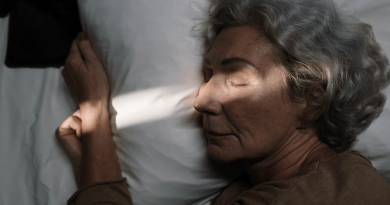Can we stop our hair from falling out?
As our bodies age, we notice changes in our appearance. We may see a few more wrinkles, gray hairs, and age spots. But one of the most noticeable changes to our appearance is hair loss.
There are two common types of hair loss – male pattern and female pattern balding. Hair loss in men often presents as a receding hairline; while in females, it typically means a thinning of the hair and usually affects the top and front of the scalp.
But hair loss can be more than just “losing it.”

“Hair loss can occur for a number of reasons,” said Dr. Rajani Katta, clinical assistant professor of medicine at Baylor College of Medicine.
Katta says that sometimes an imbalance in hormones, such as thyroid hormones, can trigger hair loss. The same goes for low iron levels.
“Sometimes people experience hair loss after pregnancy or with a sudden weight loss.”
Examining the scalp itself is important to finding the cause of hair loss because certain skin conditions can cause inflammation of the scalp, which can result in patchy hair loss.
Prevention
Unfortunately, the most common type of hair loss is determined by genetics. Katta says there is not a way to reverse your genes, but there are some steps you can take to slow or prevent premature hair loss.
It is important not to stress the hair follicle cells. Katta notes stress includes styling practices such as tight hair braids. The more stress, the greater the chance of developing premature hair loss, she said. Although women may use flat irons or curling irons every day, these instruments may damage the hair itself, but are unlikely to trigger hair loss. The same is true for most hair care products.
Diet and hair loss
Low levels of certain nutrients can be a trigger to hair loss. The most common is low iron levels, which can sometimes be seen in women from menstrual blood loss, or people with chronic blood loss. Katta says that some vegetarians may develop low iron levels.
Sudden weight loss, or very low protein intake, can send all of the hair follicles into a resting state.
“In this state, hairs fall out very easily, and some of my patients have described it as having many more hairs than usual in their hair brush. This condition will usually reverse with time,” she said.
How much is too much?
For just about all individuals, some amount of hair loss is a daily occurrence, and Katta says that the normal rate of hair loss is about 50 to 100 hairs per day.
While there are no shampoos that can prevent hair loss or regrow hair, some shampoos or styling products can add volume, which can also help minimize the appearance of hair loss.
“If you’re concerned about hair loss, I’d recommend seeing a dermatologist. After speaking with you, and examining your scalp, your dermatologist can advise you on whether any further blood tests or skin tests are needed. You should also consider a visit to your hairstylist, who may be able to recommend hairstyles that minimize the appearance of the hair loss,” she said.



